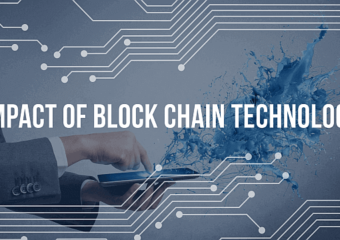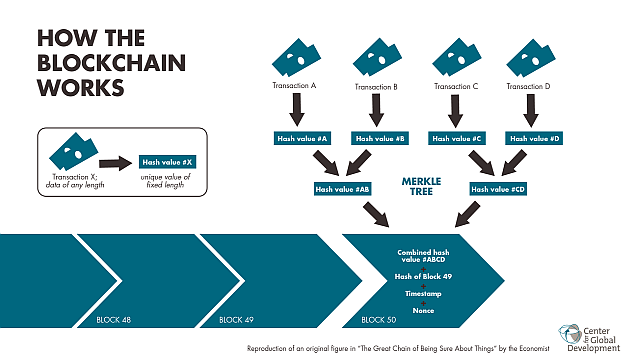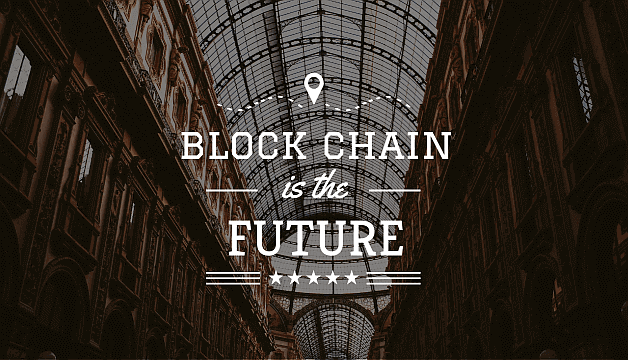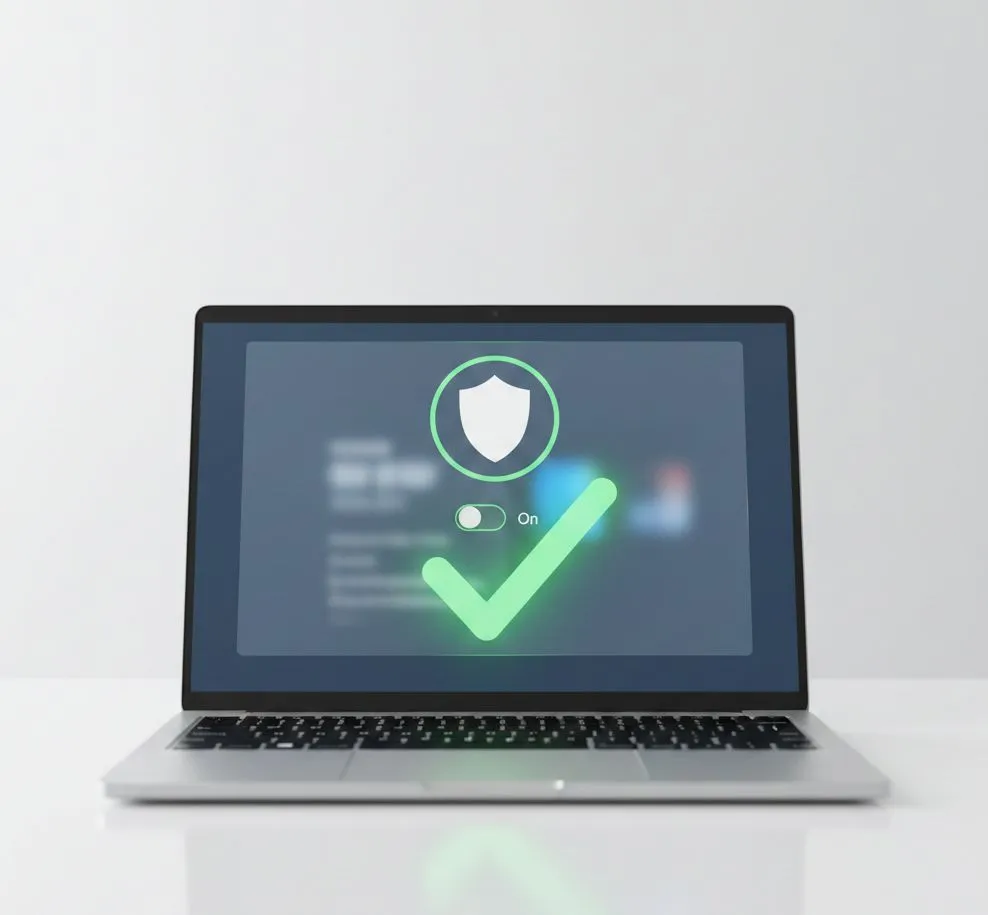Last Updated on: 8th January 2025, 06:35 am
Impact of Blockchain Technology & Digital Revolution in Pakistan
Nowadays every cryptocurrency and blockchain enthusiast knows that blockchain technology is the future. In this article, I will discuss the evolution andimpact of blockchain technology in the world.
At the end of the 18th century, the world’s first industrial revolution was heard when steam-powered machines were introduced in place of hand-made workers in garment factories. Instead of small stores, the word for factory came into being.
This industrial revolution in garment factories has led to widespread economic and social changes in Britain, and these changes were first called the Industrial Revolution.
The textile, iron and coal industries also set new milestones in the development of this industrial revolution. The first industrial revolution that emerged from Britain soon engulfed into Europe and the United States.
The historians divided the industrial revolution into two parts, from the middle of the eighteenth century until the 1830s, the first industrial revolution was named, limited to Britain only. The second industrial revolution began when Henry Ford introduced a dynamic assembly line for mass production.
The Second Industrial Revolution stretches from the mid-nineteenth century to the beginning of the twentieth century, with Europe, South America, and Japan playing an important role. This second industrial revolution has taken over many other regions of the world.
The first industrial revolution was confined to steam-powered factories, while the second industrial revolution was used to increase the manufacturing and production of science using science. These two industrial revolutions made people more urban and wealthy.
The third industrial revolution begins with digitalization, the performance and capabilities of metal machines will be further improved and improved with the help of digital devices, now the world is gearing up for the fourth industrial revolution.
Featuring artificial intelligence, changes in genes, augmented reality, virtual reality, robotics, 3D printing and other advanced technologies of this nature. But one of the technologies needed for the Fourth Industrial Revolution is being overlooked badly, especially in developing countries around the world.
To learn about this new blockchain technology, we must first understand the currency system, because the world learned about this technology only after the evolution of digital currency.
Since ancient times, grains, salt, saffron, and other spices have been used as a currency for transactions. A thousand years ago, China began to use bronze as the first regular currency in the world. After using bronze coins gold, silver, and other precious metals were used for centuries for money transactions to legalize currency and keep its value consistent.
In the seventeenth century, Chinese civilization’s “tight” traders began to make paper-made currency to relieve the burden of coins and at the beginning of the eleventh century, Chinese-made currency for the first time during the “Song Dynasty“. In the thirteenth century, paper currency was introduced in Europe thanks to Marco Polo and William Rubik.
Marco Polo, in his book “The Travels of Marco Polo“, mentions the United Kingdom State, These people use money as a bargaining piece of paper made up of trees in their country. Over time, the shape and quality of paper notes improved and subsequently introduced credit cards, which were named plastic currency.
After the advent of the Internet, “e-currency” was introduced to make money transactions, which made it more convenient for consumers to shop on the Internet. But ten years ago, on January 3, 2009, an invisible currency that had been missing for a few years appeared, but in the past five years, the currency has caused a stir in the financial system around the world and the currency has reached its peak.
In terms of value, this currency has surpassed most of the world’s most expensive currencies, including gold, diamonds, and diamonds. One coin worth the world’s first cryptocurrency, Bitcoin, reached the highest level of $21,000 a few years ago. And even today, the value of a bit of coin is equal to ten and a half thousand US dollars. Within a few years, the record rise in the value of the currency has forced the economists of the new world to settle down.

Today, cryptocurrency is known to many people in the developed and developing countries by the name of bitcoin, but most people with this complex system blockchain driven by the currency that challenges the financial system around the world. Unaware of which, as a result of blockchain, bitcoin and other cryptocurrencies increase security, stability, and scope.
The common flaw, the majority of the people involved in cryptocurrency transactions also considers this infinite technology ‘blockchain’ as a part of the cryptocurrency, while the cryptocurrency is just an application of the blockchain system. The breadth of blockchain systems can be gauged from the fact that this technology is used worldwide for Asset Management, Insurance, Cross-border Payments, Smartphones, Internet of Things (IoT), Smart Appliances, Supply Chain Sensors, Healthcare. It is working to prevent and protect the misuse of identity documents such as music, government agencies, community-based activities, births, marriages, death certificates, passports.
With the combined efforts of powerful computers, mathematical keys and technology specialists, the opportunity to introduce this technology to the world goes unnoticed. For the first time in 1998, “Wei Dai” developed its cypherpunks (a person who accesses his or her privacy on a computer network exclusively from the access of government authorities) to the mailing list, in which he puts money into a new Suggested formatting, which would include the method of cryptography (remodeling, writing or solving encrypted codes) rather than central authorities.
However, Satoshi Nakamoto was the first to use blockchain in cryptocurrency. In August 2008 a domain (website name) was registered as “bitcoin.org”. On October 31 of that year, Satoshi released a white paper titled ‘Bitcoin: A Peer to peer Electronic Electronic Cash System’ on Cryptography’s mailing list.
In January 2009, Nakamoto implemented the BitCoin software as an ‘open-source code’. On January 3, 2009, BitCoin Network created the first ‘Blockchain’ mining. At the end of 2010, Satoshi revealed more details. I abandoned this project but added several to its email list. BlockChain Developers Work on BitCoin Project Satoshi Gum’s name caused many people to have unreasonable reservations, and many of them were related to misunderstandings about BitCoin’s “open source” structure.
Now the BitCoin protocol and software are out in the open, and any developer in the world can review this code and create a new version of their modified BitCoin software, just like existing developers, the impact of the changes on these changes. Was very limited, acquired by others, and Satoshi couldn’t control it.
One of the unique things about Nakamoto’s blockchain system is that no one owns it, nor does anyone claim to own the technology that works in the background of this email. Its users around the world control it, while the developers can improve the software, but they cannot modify its protocol, as each user has to use their own custom software and version and have complete freedom.
All blockchain users need to use software that meets the same principles to be compatible with one another. An application made from blockchain works just fine when there is complete compatibility between all users. This is why all users and developers work hard to protect this compatibility.
This report discusses the conversation with the “Blockchain Advisory Board, IIB Council’ board member of Singapore and co-founder and division director of “Blockchain Forum of Pakistan”, Mohammad Hassan Khan, about the past, present and future of blockchain technology.
Blockchain Technology And How It Works
In fact, blockchain technology is an important part of the fourth industrial revolution. By the way, this technology has evolved with Bitcoin, but to understand this complex system, you have to split it into two blocks – ‘A’ and ‘B’. When we combine the growing record with ‘cryptography’ it is called a block, each block has a ‘cryptographic hash’. Then the previous block (in which the transaction record is stored) is given a special setting with a timestamp (the complete date and time of the transaction), which is called a ‘linked list‘ if it is ‘Blockchain‘.

Blockchain is an open and split ledger that works very effectively with the ‘P2P’ network between two parties. When a block is written in the blockchain ledger, then it is almost impossible to make any modifications. In the technical language, we call it immutability.
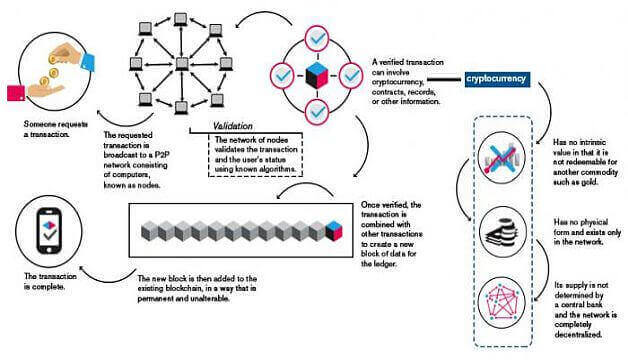
On account of it, we call this technology immutable, very difficult to edit and almost impossible to hack. All this is done at the base of distributed computing systems. The decentralized consensus algorithms make the blockchain secure.
Think of it as if you had a blockchain like Bitcoin, whose network of resources and ‘computational’ power was powered by very powerful computers, such as ASICs around the world. Now, to hack this system, all the resources of this network must be assembled and attacked with 51% power, then you can hack Bitcoin blockchain for tampering. ۔
Likewise, the resources provided by Bitcoin Blockchain are provided by computational resources, and Proof of Work (POW), which is Bitcoin’s special consensus algorithm, executes it on the network. It is called a miner. Bitcoin’s blockchain is an open and public blockchain that can be joined from anywhere in the world, which is why we call it an open blockchain (public blockchain/licensed block chain).
Blockchain technology maintains a complete record or transaction of transactions between different people (parties) securely in permanent cryptographic blocks, then the blocks gradually merge into one another. And their best case scenario is its de-centralization.
Because of this, we can securely exchange money or exchange information in any country in the world at any time we want. And this is the reason that financial institutions around the world are adopting this technology. Blockchain is maintained via a P2P network. For example, when we interact with company software in the office, when we use Facebook or Twitter, we communicate directly with each other but it only shows that our communications are direct, in fact, we are connected via a central server.
P2P network does its opposite, 2 different parties can communicate directly and bilaterally without being connected to a central server via the P2P network. Torrent is a great example of a P2P network.
What Is Cryptography?
About this, Mohammad Ahsan Khan says, “The part of the blockchain is cryptography.” This is a technique that is widely used in Internet applications, cryptography is a method by which we transmit our information (data) with some code to forward this message. Anyone who has the KEY to read this message can read the message sent via cryptography, even simply saying it as a password.
In this way, communication over the Internet travels securely from one place to another. And even if someone hacks this message, only the codes will show up. There are numerous cryptographic algorithms (calculation process or its rules, especially computer-solved problems), the process of converting a message to a code is called ‘encryption‘. And the process of retrieving the original message using KEY along with the message is called ‘decryption‘.
Cryptography has been used for centuries to secure messages, something that has been used even before the Internet and information technology. A clear example of this is the algorithm known as Caesar Cipher 121, which was used to change the alphabetical order of messages.
Suppose you want to send someone a ‘blockchain’ message, you will use any of the 26 English alphabet numbers as KEY and under the mathematical key replace all the letters with KEY. I will send the message. If the recipient of the message already knows the KEY, it will be able to read the original message using this algorithm. This is a very old, simple and simple algorithm that exists in cryptography books to this day.’
Blockchain Technology And Other Fields Of Life
Ahsan Khan said, “Most people consider the blockchain system to be a part of cryptocurrency (BitCoin, Ethereum, Litecoin, XRP, EOS, Stellar Lumens, Tezos, USD Coin, Zcash, Chainlink, Ox, Dai, etc.), but the reality is opposite to it, Cryptocurrency is just an application of blockchain and Blockchain plays a very important role in its invention. As we have previously stated, Satoshi Nakamoto introduced blockchain in his white paper that was published in 2008 and subsequently created BitCoin in 2009. The blockchain we know in today’s era is not just limited to the creation of cryptocurrency.
They can now be used successfully in many areas of life. Banks, financial institutions around the world are using Blockchain for transparent KYC (Know Your Customer). The fourth industrial revolution is subject to modernization and significant breakthroughs in the field of technology, and one of the qualities of blockchain is that it is instrumental in contributing to the digital, biological and physical inventions needed for the fourth industrial revolution. is ready. You can make full use of this revolutionary technology in the fields of society, politics, culture, and economy.
This technology can be extended to the industrial mechanics working in the heavy mechanical industry. Combining this with automation and artificial intelligence can also be used very well in industries where humans are more likely to have serious health problems. Poor diet is one of the major problems facing developing countries. You can find out if food is fresh or stale by the blockchain, using the ‘track and trace’ system, which is the raw material used in the food preparation process. Can check quality up to ready meals. Anonymous accounts can be completely eliminated if they are fully implemented in our banking system. Blockchain technology can be used as an effective tool to prevent selective fraud. Online voting can be avoided by any kind of fraud by connecting to this system.
A clear example of this is the 2016-17 election in the US state of Virginia. You can use it for digital identity the same way Estonia does. There are many excellent examples of blockchain in the public service, I am personally affiliated with the European Union Blockchain Observatory and Forum under the European Union’s H2020 project. Take the example of Dubai, Dubai World in 2020 Will be the first government in which 100% of operations will depend on the blockchain. In addition, blockchain technology can be used successfully in hospitals, clinics, patient details, property sales, legal and judicial systems, artificial fluctuations in the stock exchange and fraudulent identification documents.
To prevent artificial volatility in the stock market, advanced algorithms such as artificial intelligence can be developed using blockchain technology to develop specialized algorithms that can track trading activities, trading activities, and traders in the stock market. Check for ‘abnormal activities’ by checking. If we develop a system by combining only these two technologies, the stock market fluctuations can be avoided, as well as various problems in public and private entities. It has been used in the Islamic banking system for the last three years. ICIC and Emirates NBD Bank have been doing research and development on Blockchain to reduce transaction costs since 2016.
Emirates Islamic Bank is the first Islamic bank in the world, using blockchain technology to identify and protect financial fraud since 2017. Saudi Arabia’s Islamic Development Bank has also been working with Crypto firms since 2017. In April 2018, an Indonesian financial firm Blossom Finance conducted a study, and after reviewing the research, Islamic scholars there declared that the cryptocurrency was valid under Islamic Sharia law. The United Arab Emirates ‘Al-Hilal Bank’ is the only Islamic bank in the world to launch a transaction blockchain in Abu Dhabi’s Global Market Finance Center. Blockchain technology is gaining prominence in Islamic countries for ‘easy access to Islamic investment’ due to transparency.
According to a recent report by American audit and consultancy firm Deloitte, Sharia Compliance’s market worldwide is very large, equivalent to 2 percent of global investment, which is growing by 18% annually. According to the report, $600 million worth of Islamic funds are being raised worldwide and the assets of the Islamic Banking and Finance system are estimated at $ 3 trillion. Deloitte’s report gives you an idea of the future of blockchain technology in the Islamic banking system. Blockchain is a technology that can be used to create products and services, can be used in a variety of ways, such as supply chain, public service, fine tech, health tech, and numerous industrial purposes.
To support blockchain applications and technology and the cloud, major companies like Amazon, IBM, Microsoft have launched their own services and products, which allows any developer or company to integrate their applications or services into their own or can launch and operate via the Platform.
Importance And Scope Of Blockchain Technology In Pakistan & Problems With Cryptocurrency Legislation
Cryptocurrency is not a country that you end up with an atom bomb, or to prevent it from causing a political or economic crisis, as a powerful country does to another country, be it a central bank, a financial institution. Or the invention of a technology company, neither they invent it nor they run it. Think of it as a dollar that is the currency of the US government, the pound is the currency of the British government, but a universal currency for all people in the world, free from Bitcoin or other cryptocurrency borders. BitCoin cannot be terminated or closed, since neither it operates nor is it a country or state-owned enterprise, nor is it a technology company product. If you take a look at the history of BitCoin, its number was probably not even 10 nodes at the time of its launch in 2009 and today its number is around ten thousand.

These figures prove that it was stopped in the last ten years by being illegal, but it is still spreading rapidly and if the value of Bitcoin and the US dollar is assessed today, the value of Bitcoin is in US Dollars ($).
It is several hundred times higher than if a country or any law in the world says that the people of the world should have economic freedom or that their economic assets should not be affected by any political, social and economic crisis, then you have to must come to the cryptocurrency.
Technologies such as cryptocurrency come into society when there is a flaw in the already existing system and the inventors propose a solution. Prior to January 3, 2009, no Satoshi was known in the world as Nakamoto, nor was anyone aware that the currency made in the name of Bitcoin would enter the financial system of the world. Instead of trying to make it illegal for you, work hard to legalize it so that it benefits both the public and the country.

Blockchain technology is based on three-parent, de-centralized (transparency-centric), transparency and transparency, these banking systems are very important in any banking or financial institution system but still block There are many reasons why a Blockchain’s application ‘cryptocurrency’ is not yet legalized.
In the world, however, it is not so easy to connect this technology directly to financial transactions and the economy. Various financial and financial policymakers and central banks around the world do not legalize cryptocurrency or deny the efficacy of this technology.
Ahsan Khan says, “But technically Bitcoin or other cryptocurrencies are very effective, but I think the regulatory issues in legalizing this currency will remain in the future.
The topic of cryptocurrency was debated at the G20 meeting in Argentina last year. G Twenty-two countries also discussed the unique technology of blockchain and cryptocurrency securing and foolproof, with emphasis on legalizing bitcoin and other cryptocurrencies on the one hand, in this meeting called ‘check and balance’ There was also talk of keeping it, taxing it, money laundering, tax evasion, preventing its use in terrain financing.
When powerful and advanced countries of G20 are seeking to regulate and legalize cryptocurrency, it is implied that the buying and selling of bitcoin and other cryptocurrencies will be similar to those countries in the Forex market soon. Like the traditional currency like the dollar, the pound and the euro, “he says,” the government of Pakistan should formulate a solid policy to regulate and legalize the cryptocurrency, due to the falling value of the rupee. The declining economy is supported, the greatest example being that of Venezuela, the South American country. Venus Vela introduced Petro’s legal and state-owned cryptocurrency in February 2018, raising $ 735 million in 24 hours since the currency was introduced. On the 4th of the same month, Venezuelan President Nicolas Maduro issued a decision allowing citizens to transfer Petro to the central bank Banco de Venezuela.
This year, the social networking website Facebook also announced the introduction of its cryptocurrency called Libra. Cryptocurrency is rapidly catching up with the world, in many countries it is also being given a state and legal status. You can look at the US Security Exchange Commission, Cyprus legislation, or study the bills offered by the EU Member of Parliament Eva Kelly, or the ‘Digital Digital Innovation Authority’ and so on. Observe the legislation for linked ‘Maltese digital assets’, all indicating that the cryptocurrency legislation has not been done so rapidly in the last ten years, which is increasingly being done now.’
Blockchain Developers In Pakistan And Job Opportunities
In this regard, Ahsan Khan said, “According to data from TECH CRUNCH, a technology-based website, the demand for blockchain developers in the market is increasing day by day, with only one blockchain for the 14 jobs posted for this post last year. The developer was there. The demand for specialists in this sector is high and supply is low.
Pakistan ranks fourth in the list of freelance working countries worldwide, we can meet this demand by training the youth of our country for blockchain development. Thanks to the freelance work, remittances will be able to come to Pakistan. To become a BlockChain Developer, it can be easily learned to master C++ and Java languages, scripting or programming languages such as solidify of Ethereum Blockchain. In today’s world, it is very easy to become a blockchain developer or to get any type of development training.
Videos, training tools and content on the Internet are available free of charge and free of charge. Many people are working freelance learning blockchain development. According to a cautious estimate, there are around 150 blockchain developers in Pakistan who are somehow involved in freelance work, and some are getting training, some are looking to improve their skills, We started a program to train ten thousand blockchain developers, but could not be implemented due to lack of resources.
Recently, a program was launched by President of Pakistan called ‘Presidential Initiative for Artificial Intelligence and Computing (PIAIC). PIAIC’s Course Outline is very well made, I think that people wanting to become a blockchain developer should get training from PIAIC, as its faculty is very good. Talking at the level of educational institutions, then IBA is probably the only institution where a separate block called ‘Blockchain Investigation Center‘ has been created which also introduces numerous training programs and consultancy projects related to Blockchain. Have been made.
IBA Sukkur in collaboration with the Government of Sindh has introduced the ‘Center of Robotics, Artificial Intelligence and Blockchain (CRAIB)’ and a budget has also been allocated for the next financial year. And on the style of this IBA program, such fields should be established at the college and university level throughout Pakistan. Recently IBA’s ‘Blockchain Innovation Center’ has also developed a land registry and educational certification system with the help of blockchain technology. China’s growing trend toward blockchain of big companies like IBM, Samsung is making it even more important. If you are passionate about blockchain, crossing over can give you a bright future. The world is working very fast on this technology, which is also important for us to achieve, if we do not invest our time and time on these new technologies, then the chances of improvement in the future will be less.
Blockchain Technology & Its Cost
About this, Ahsan Khan said, “Blockchain technology basically consists of two major costs: a Deployment Expense and an Operational Expense. If you take Bitcoin, for example, its deployment costs nothing, but its operational cost is very high, for example, the cost of computers used for cryptocurrency mining is in the thousands of dollars. Miners invest their machines and conduct Bitcoin transactions and mining, which in turn gives them an incentive in the form of coins, which is their return of investment.
This example is linked to public blockchain ‘Bitcoin’, so if you want to talk about enterprise-level, if a company wants to make its supply chain more transparent or efficient, then it will use cloud servers and cloud computing, also a deployment and operational cost. The cloud itself. If blockchain is viewed in terms of services, companies like Amazon, Microsoft and IBM are already providing services in this regard, while private companies can deploy their blockchain deployments and operations on the cloud, but for that, you have to pay for your resources. Now let’s talk about the blockchain technology cast of transactions. It is not true that BlockChain is devoid of transaction cast. A blockchain transaction is always a public or private blockchain cost, it can be more or less in different formats.
Blockchain Technology In The Future
About this, Ahsan Khan says, “My topic is not a cryptocurrency but its powerful technology like blockchain that works behind it. Some people in Pakistan are working on blockchain at the individual level, but their projects are from outside companies. They are serving their overseas customers. Sindh Minister for Information Technology Timor Talpur Sahib recently discussed the issue of blockchain and IT-related issues. Under his ministry, a draft of the establishment of an organization called ‘Sindh IT Board’ has also been prepared, which will be submitted to the Sindh Assembly for approval soon.
The purpose of this board is to establish a specialized university for blockchain technology with governance, digitalization and to facilitate the private sector in this regard. Blockchain and other emerging technologies will also play an essential role in the IT board. As far as the future of cryptocurrency is concerned in Pakistan, it is a virus that is rapidly catching up all over the world.
Awareness of this has also reached the Third World countries, developing countries and emerging markets, governments of developing countries, institutions are working to promote and adopt it, legislation and various policies as needed. And other countries, such as the US, European countries, Gulf countries, Malaysia, Cambodia, Vietnam, etc., have done so because they want to take advantage of this invention because its future and prospects are very glorious. In Pakistan, the central bank has banned the purchase of bitcoin and other cryptocurrencies, but it has a high potential for growth in other countries of the world.
If you look at blockchain separately from cryptocurrency, its scope is high, so your focus should be the only blockchain. To think about cryptocurrency, you have to invest a lot of money (in the form of manpower, time and money), along with legal matters, policies, and regulations. But if you just want to get away from cryptocurrency and just use blockchain, it is very easy and the growth is huge. According to a report, many private companies around the world have invested more than $2 billion in blockchain ecosystems; there are more than a thousand active companies, with the global market reaching $290 billion in the next few years is expected.
A survey was conducted last year by PWC, a British firm that provides tax and financial affairs advice, to include 600 executives of 14 tractors, 84% of which are in Respondents Blockchain. Yes, 30% think the China block will lead China, and 28% think that Interperobaility can play an important role. According to global research firm Gartner’s prediction, blockchain in the US by 2030 alone could generate $ 3 trillion a year’s occupancy value, while 10 to 20 percent of the infrastructure in the world would have moved to blockchain technology-based systems by 2030.
According to the PWC, 20% of the research is being done on the blockchain, 32% of development, 10% of pilot projects and 15% of projects are active and 7% are held for some reason. According to the World Economic Forum, blockchain could add about $ 1 trillion to global trade, which would depend on SMEs. According to an article published in Coin Desk, a website that works on bitcoin and digital currencies, 40 of the world’s central banks are favoring blockchain applications, the majority of which is based on ‘Absent cryptocurrency’. There are applications built on, but industry trade, finance, banking, technology, payments, and remittances, etc. are also among their priorities.
According to Deloitte’s 2019 survey, blockchain is now entering the maturity phase. The survey, conducted between February 2018 and March 2019, included 12 countries, including the United States, Canada, South America, Europe, and the Gulf. Companies in the US that were included in this survey had annual revenues of $ 500 million or more, and companies from countries other than the US were made part of the survey with annual revenues of $ 100 million or more.
The survey also included emerging companies with less than $ 50 million a year that were related to blockchain. According to the survey report, 40% of companies want blockchain sales of about $5 million over the next 12 months; 53% believe that blockchain is a ‘dangerous priority’, 83% believe that the use of blockchain is slightly better and more important, while blockchain is often among the top 5 priorities of companies, 23% of companies have already started working on it. All the above research and survey results can be gauged from how rapidly blockchain is gaining popularity in the world.
What Is A Cryptocurrency?
One of the unique things about digital currency is that no one owns it or claims to own any technology working in the background.
While cryptocurrency is controlled by its users around the world, developers can improve this software, but they cannot change the protocol of this currency, as each user has their own custom software and You have complete freedom to use the version.
All users need to use software that meets the same principles to be compatible with one another. Cryptocurrency works best when there is complete compatibility between all users. This is why all users and developers work hard to protect this compatibility.
How Does Cryptocurrency Work?
From a user’s perspective, cryptocurrency is nothing more than a mobile application and computer program that provides a private crypto coin wallet, and the user sends and receives the coin (digital currency) through it. But contrary to the user’s point of view, the digital currency’s Coin Network shares in a public ledger called “blockchain”. This ledger contains all the transaction details and the user’s computer is verified for the accuracy of each transaction. Every transaction is protected by digital signatures to avoid counterfeiting, while rewards are also offered as computers, often referred to as “mining“, through a computer or specialized hardware.
Cryptocurrency Exchange Payment Methods
Buying a digital currency is more convenient than a credit or debit card and can be received without a merchant account.
The payment is made through the Wallet application and you can use the application from your computer and smartphone, enter the recipient’s address and the amount to be paid and press the send button.
Smartphone uses QR code (which includes address, phone number, email address and website information specific code that contains black and white square boxes and scans to make it easier to write recipient’s address) that transmits all the information on the phone.
With this method, transfer and collection of funds take place at any time anywhere in the world.
This procedure is independent of the confines of a border, a bank holiday and government policies. Cryptocurrency gives the user complete control over their money.
There are no fees charged for digital currency payments, however, a nominal fee is charged for converting BitCoin into paper notes or depositing it directly into the seller’s bank account, which is much less than PayPal and credit card networks.
Transactions made through cryptocurrency are secure, non-refundable, and do not include sensitive and confidential user information. This is why for business purposes it is considered a safe and reliable currency and businessmen can also potentially avoid credit card fraud.
The digital currency user has complete control over his transaction, and it is impossible for the seller to receive additional fees from the customer paying through the cryptocurrency.
Disadvantages Of Cryptocurrency
Cryptocurrency is completely open-source and decentralized, which means that anyone can lose millions of material lives around the world by capturing full source code at any time.
However, this is seemingly impossible, since this whole system consists of “cryptographic algorithms” and no individual or organization can have complete control over the digital currency chain block.
One of the biggest disadvantages of digital currency is that most people don’t know much about it yet.
One of the major disadvantages of cryptocurrency is its rapid volatility in value, which has the greatest impact on small businessmen and businesses receiving digital currency.
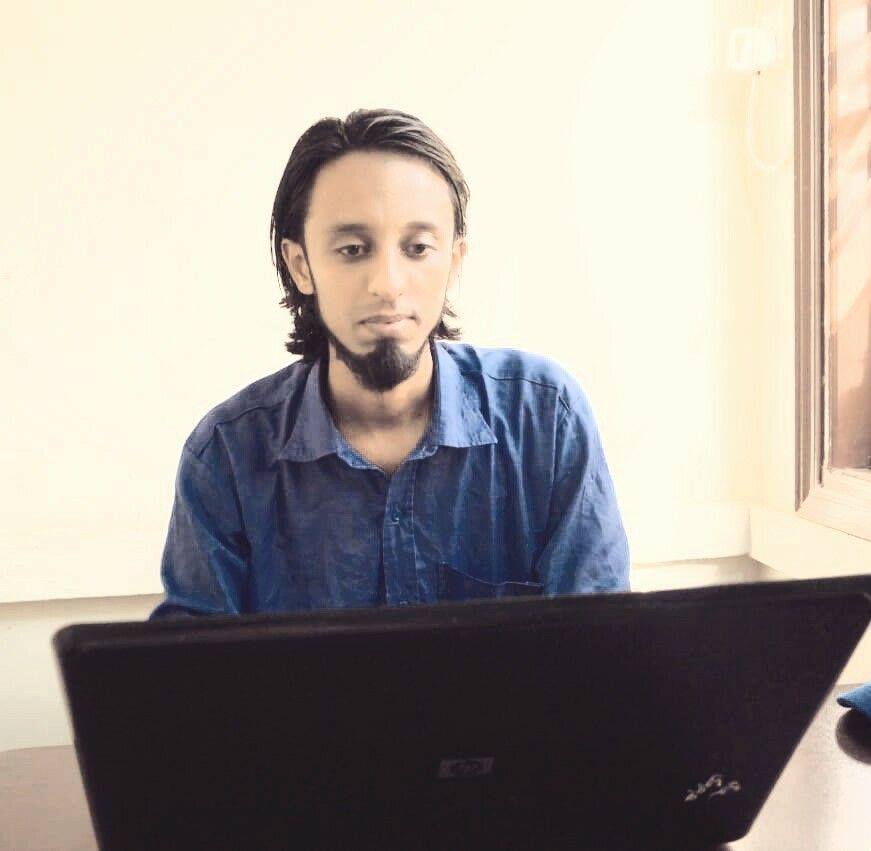
Researcher, Blogger, Content Writer, Online Marketing Expert, Aptitude Test & Admissions Expert, Career Counselor.
PEC REGISTERED. ENGINEER. (NED University of Engineering & Technology)
CEO / Founder (The Educationist Hub)

